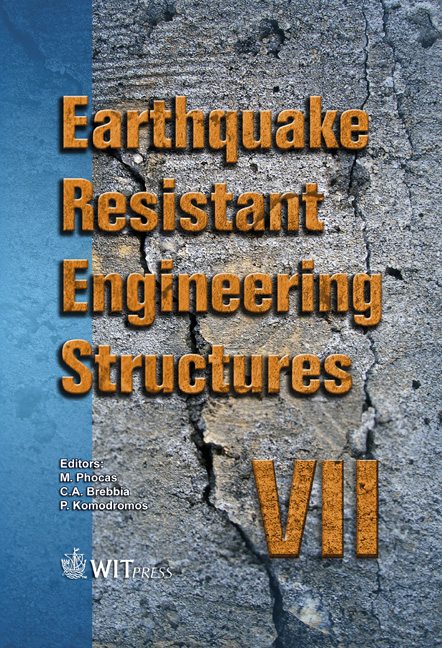Assessment Of Buildings Response To Earthquakes
Price
Free (open access)
Transaction
Volume
104
Pages
10
Page Range
73 - 82
Published
2009
Size
326 kb
Paper DOI
10.2495/ERES090071
Copyright
WIT Press
Author(s)
A. Farah
Abstract
Modern buildings are designed to withstand earthquake loads and to reduce the probability of a disastrous collapse or life-threatening damage due to strong earthquakes. Under medium-intensity earthquakes, the damage to buildings should be repairable, and no building damage or discomfort to the occupants should occur due to minor earthquakes. Buildings are designed to have some structural damage but not collapse due to major earthquakes. The parameters that influence the building behaviour include the characteristics of the earthquake, the soil and the structure itself, such as mass, stiffness and damping. Some earthquake characteristics coupled with suitable site conditions can produce resonance in buildings as was the case that led to the severe damage due to the Mexico earthquake of 1985. In this paper, the response of a building to seismic excitations is evaluated using soil-structure interaction parameters, and its severity is assessed based on the comfort level of the human occupant as judged by the absorbed power (rate of energy dissipation) through a biomechanical model placed on a given floor of the building. The building is represented as a multi-degree-of-freedom system with soil-structure interaction, and the earthquake action is represented by its power spectra. The results indicate that absorbed power differentiates between comfort levels, and therefore human response, at the different floor levels. Results also show that the soil characteristics, the earthquake power spectrum as well as the damping in the structure have significant effect on the response of the building. Keywords: earthquakes, absorbed power, human comfort curves, building serviceability, power spectra, soil-structure interaction.
Keywords
earthquakes, absorbed power, human comfort curves, building serviceability, power spectra, soil-structure interaction.





